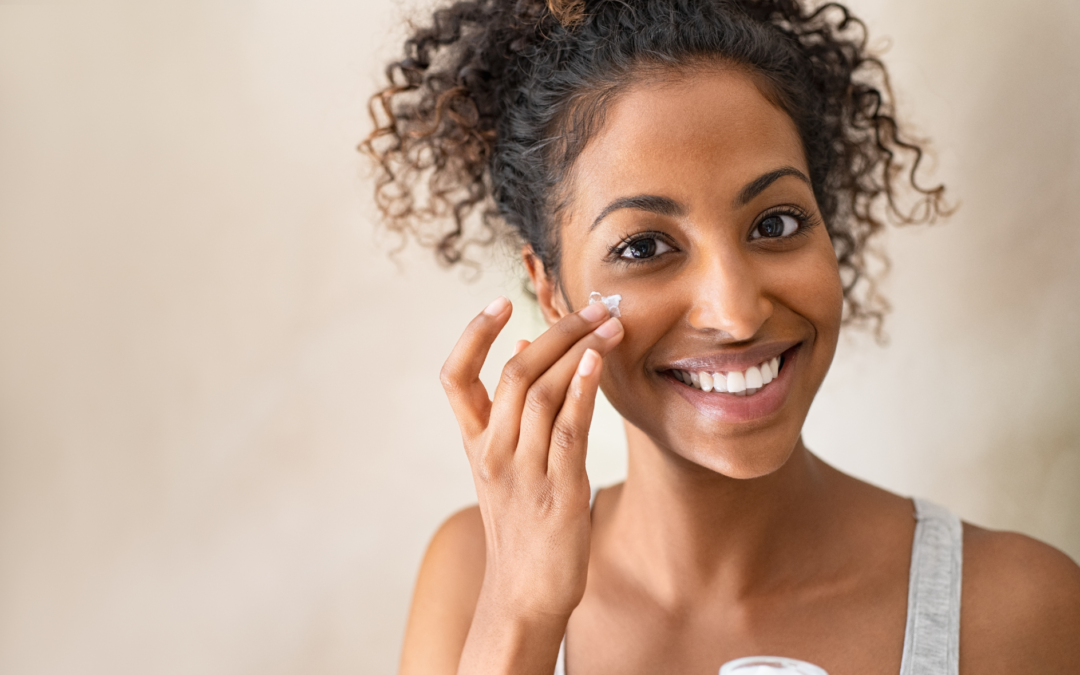One would think everyone would be done with acne after puberty, but unfortunately that is not always the case. Hormonal acne can affect skin of all ages. Even after menopause, the hormone changes the body goes through can lead to breakouts – yikes! While most seek out topical treatments to address acne, there are a lot of other ways to help decrease those pesky skin flares.
What causes hormonal acne?
Acne, in general, is a skin condition caused by a combination of inflammation, oil production, bacteria, and clogged pores. What sets hormonal acne apart is its appearance in relation to hormone fluctuations. Hormonal acne can appear or worsen with the menstrual cycle or when the body is dealing with stress.
The hormones impacting acne may include:
- Progesterone and estrogen imbalance
- Elevated androgens such as testosterone, DHEA, and DHT
- Elevated insulin
- Elevated cortisol
The pimples that appear may be painful, deep, and cystic. The jawline and chin tend to be the most affected locations.
The naturopathic doctor’s approach to hormonal acne
Hormone Testing
First, your hormones are checked via blood test. Another option is urine testing, such as the DUTCH test, which provides a comprehensive view of HOW your body is processing hormones. Both of these provide a full picture for your doctor to zone in on imbalances that can be improved.
Reducing inflammation
As acne is an inflammatory skin condition, many times your naturopathic doctor will review other body systems to discuss causes of inflammation. This usually involves working on diet and nutrition, improving gut health and the microbiome, reducing stress, and improving detox pathways.
Skincare Routine
As you work on the inside, establishing a solid skincare regimen is key to improving the skin’s terrain. I recommend setting up the basics for acne-prone skin:
- Start with a gentle cleanser. Some cleansers marketed for acne can be stripping and drying to the skin. Find a cleanser that creates a nice lather and leaves the skin clean and smooth, without feeling dry.
- Layer on an acne fighting topical with active ingredients. These are usually ingredients such as salicylic acid, benzoyl peroxide, and/or retinoids. Some natural ingredients also include azelaic acid, niacinamide, and tea tree oil. These would be recommended or prescribed depending on the severity of acne.
- Look for a non-comedogenic (aka non-pore clogging) moisturizer. Sometimes I like to recommend a clarifying oil as a moisturizer for those with dry skin.
- Exfoliate with a chemical exfoliator such as glycolic acid, beta hydroxy acid (BHA), or alpha hydroxy acid (AHA). Exfoliation helps with skin turnover, but doing it too often can deplete your skin’s moisture and become irritating. I recommend exfoliating 1-3x a week, depending on your skin type.
Medical procedures such as laser therapy or chemical peels can be helpful with improving skin texture and tone, and treating acne scars. I have seen great results with microneedling combined with Platelet-Rich Plasma (PRP), a service offered here at Natural Medicine of Seattle.
Everyone’s skin is different, but acne can be manageable with a good skincare plan and healthcare team!


